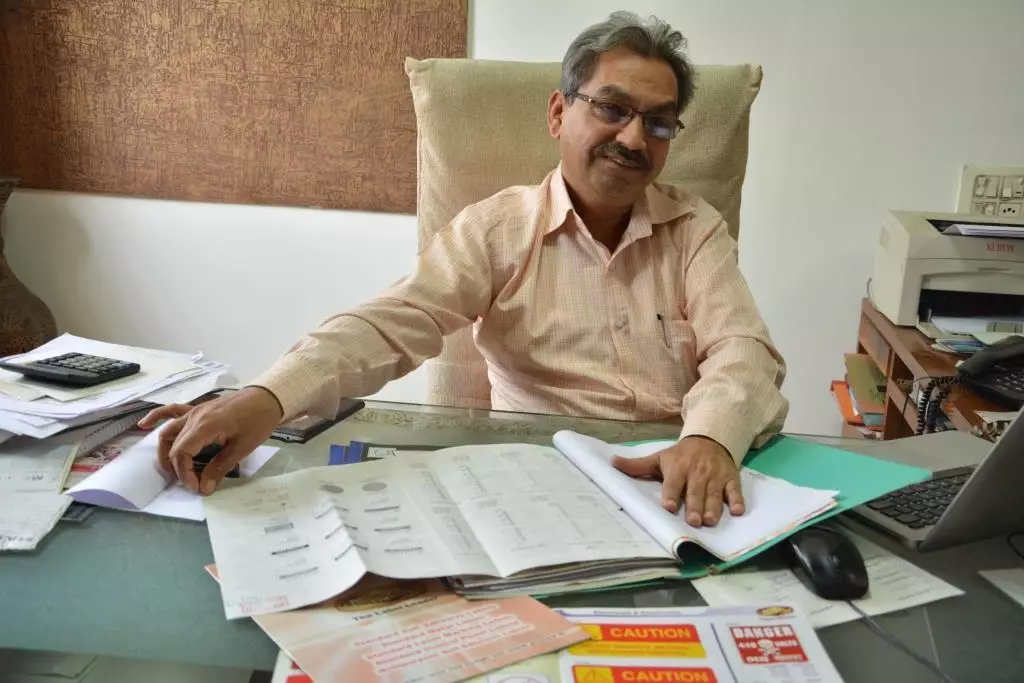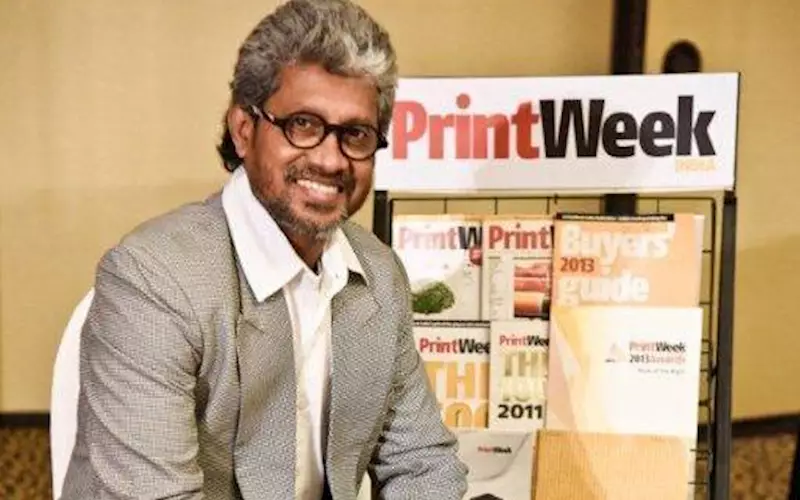It’s the perfect case of their clients pressing all the right buttons for the father-son duo of Bakul and Meet Pandya of National Process Labels. The duo has developed two web-to-print portals, moving on from being a traditional label printer in existence since 1968. They have tapped into a lucrative niche of using the digital portal to sell industrial labels to both domestic and overseas markets. All it takes for a client is to brush in a few keystrokes to order print and to execute and to deliver this order seems simpler to the eye.
Call them tech-savy or marvel at their business acumen, but the development of two swanky looking, easy-to-browse-through web stores with customised solutions, has taken a lot of confidence, perseverance and patience for the duo. For their first web store, www.standardlabelsindia.com, Bakul recalls, “It took us six months to develop it and get it running. And the first order came in only two-three months after that.”
Today, the company claims to be the only web store catering to industrial label production segment with more than 15,000 label options across substrates – aluminum, paper, stainless steel, across sizes, and across indoor and outdoor applications for quantities as small as one to long-run production. These labels are available across categories like hazardous, general purpose, environmental, caution / warning, among others. The categories also address the current fads in the marketplace, for instance, the Make in India branding or the environment safeguarding initiatives etc. But, as the duo puts it, this is work in progress. “A lot of more categories will be added to this. Every day, at least one new design is added to the list.”
The journey from Standard Labels to NP Labels
The Pandya duo had noticed that a web-to-print portal with a certain level of customisation was riper than a fixed template format. “We wanted a web-to-print store that would allow customising of even the general purpose labels like push-pull, caution, danger, etc,” says Bakul. “It had to offer more than just the usual while controlling quality and costs to the nth degree.”
And it was only after five years of their first store that the nplabel.com portal went live. With a blueprint chalked out, Bakul persistently sought a W2P service provider who could incorporate the many layers of listing. Even after chiseling down on Radix’s OnPrintShop, the duo had to wait for one year to get the development going and after that, there has been no looking back. Leveraging on the six-month learning curve of the Standard Label store development, the company was able to develop and launch the N P Label portal in just three months.
This is all backed with the tricks of the trade rolled up the tech- sleeves of the duo. In addition to including newer products regularly, the company updates the backend of the portal, uses Search Engine Optimiser (SEO) to ensure seamless surfing and effortless order placing.
With one web store NPL added two new customers to its clientele every day and now with two portals, that number has gone up to five. And on the other side, the company adds about 20-30 new design templates to its list.
“The entire journey, beginning from acquiring knowledge about web to print to finding the right solution has been a learning on the move. There have been trials and there have been errors, but it was the urge to surge ahead that has kept us going,” says Bakul.
It’s not just about the store

“In the five years to come, everything will move onto the online platform, acting as a window into a company’s offering or connecting with newer clients. It’s a 24*7 sales pitch that you make. That said web-to-print model is not everybody’s cup of tea. It is an ongoing investment both in terms of time and money. For the first four to five years you have to bleed to avail the benefits. At intervals, the site needs to be upgraded which is a fixed cost,” says Meet.
The duo admits that most times it is not about the store. “Simply hosting a web-to-print platform is not enough. The store needs to be updated. Plus, at each step communication needs to be maintained with the client, more like a feel good factor and as a marketing tool.” This begins with a courtesy message on registration, an SMS confirming their order, an SMS by the payment gateway confirming the payment, a tracking ID to track the shipment, and so on.
Furthermore, online orders translate into an increase in the offline production. “Entering the web-to-print space involves strengthening your offline production capacities. One cannot sit back easy with a web store. The capacity to deliver to these orders means burning the same money, and some time a little more, since it requires you to up your production,” says Meet.
The NPL facility houses two offset proof press, a flatbed machine used for proofing prints in the good old days, for metal printing; three wide-format printers, two from Epson and one Roland DG; and flexo technology for long-run paper labels. Except for the pre-press, the production to delivery of an order is executed from the shop floor. NPL offers its clients shipment options based on the delivery time. “In the earlier days, we used to bear all the expenses incurred for dispatching the order. However, now we have two options for the shipment – the standard and the express delivery. The express delivery is chargeable.”
Online vs offline

Six years and two online portals but the platform constitutes only 10% of the entire business. But in the past few months, it is increasing by a higher margin – about 20%. “But it is this 10% that contributes to increase and sustain the 85% of the business. A customer returns to us for larger quantities and at this time it’s the online that triggers the offline buy," concludes Bakul.
Next for NP Labels, and it won't come as a surprise if they do, will be to tap the popularity of smartphone to access web. "It's always been one day at a time for us," say the duo.
Here is a print company that is making print prosper by taking advantage of the power of Internet.


 “In the five years to come, everything will move onto the online platform, acting as a window into a company’s offering or connecting with newer clients. It’s a 24*7 sales pitch that you make. That said web-to-print model is not everybody’s cup of tea. It is an ongoing investment both in terms of time and money. For the first four to five years you have to bleed to avail the benefits. At intervals, the site needs to be upgraded which is a fixed cost,” says Meet.
“In the five years to come, everything will move onto the online platform, acting as a window into a company’s offering or connecting with newer clients. It’s a 24*7 sales pitch that you make. That said web-to-print model is not everybody’s cup of tea. It is an ongoing investment both in terms of time and money. For the first four to five years you have to bleed to avail the benefits. At intervals, the site needs to be upgraded which is a fixed cost,” says Meet. Six years and two online portals but the platform constitutes only 10% of the entire business. But in the past few months, it is increasing by a higher margin – about 20%. “But it is this 10% that contributes to increase and sustain the 85% of the business. A customer returns to us for larger quantities and at this time it’s the online that triggers the offline buy," concludes Bakul.
Six years and two online portals but the platform constitutes only 10% of the entire business. But in the past few months, it is increasing by a higher margin – about 20%. “But it is this 10% that contributes to increase and sustain the 85% of the business. A customer returns to us for larger quantities and at this time it’s the online that triggers the offline buy," concludes Bakul.










 See All
See All